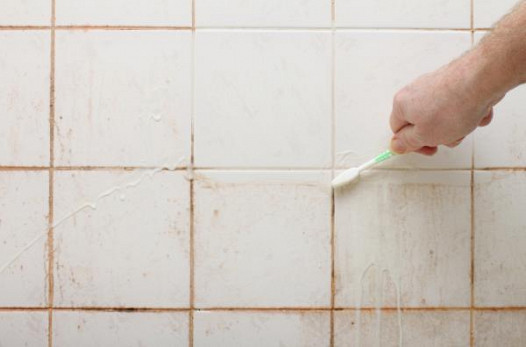Bathroom Water Damage - Ways To Avoid This Happening
Bathroom Water Damage - Ways To Avoid This Happening
Blog Article
Are you currently on the lookout for tips on Preventing Water Damage in the Bathroom?

The washroom is very susceptible for moist buildup and also possible water damages as a result of the regular use of water in it. This article supplies basic assessment methods to help spotting water damage threats.
The constant use of water in the restroom makes it extremely at risk for wet build-up and potential water damages. By checking it frequently, you can reduce water relevant problems.
The following collection of assessments is simple to perform and also ought to be done once in every 3 months in order to keep your bathroom healthy as well as to prevent possible water damages caused by the tub, the shower, pipe joints and also plumbing, sinks, cupboards, and also the bathroom
Do not overlook executing these assessments and also be complete while performing them. Remember that these basic inspections can save you a great deal of money by giving early indications for water damages
Bathtub as well as Shower
The shower and tub require unique attention and also upkeep. Inspect the ceramic tiles and change if split. Ensure that there is no missing cement between the floor tiles. Check as well as replace fractured caulking at joints where the walls meet the flooring or the tub. Clogged drains pipes as well as pipes troubles will certainly avoid the bath tub from drying out and might indicate significant issues under the tub. Consult with an expert immediately to avoid structural damages. Pay attention to discolorations or soft locations around the bathtub wall surfaces as they may suggest an inner leak.
Plumbing
Signs for water damages are hard to find since a lot of pipelines are installed inside the wall surfaces.
Pay special interest to floor covering and wall surfaces dampness and discolorations as they may suggest an unseen plumbing problem. Inspect dampness levels in adjacent areas as well.
Sinks and also Cabinets
Sinks as well as closets are subjected to dampness as well as moisture daily as well as are often ignored. Inspect frequently under the sink and also on the countertop over it. Repair any kind of drip in the trap as it might recommend drain issues. Look around the sink, sluggish draining pipelines may suggest an obstructed drainpipe. Change sink seals if they are cracked or loose.
The Toilet
The commode is an at risk water joint. Check the water lines and search for leaks around the toilet seat, in the hose pipe, and under the water storage tank. If you spot any indicators of dampness on the flooring around the commode, look for leakages in the toilet edge and also container seals.
Realize that hanging commode dish antiperspirants raises the chances for obstructions.
TIPS TO PREVENT WATER DAMAGE IN THE BATHROOM
The average household uses approximately 80-100 gallons of water per person per day. For a family of 4, that's almost 2,500 gallons of water a week! The largest portion of this consumption comes from bathroom use. Flushing the toilet uses the most water, followed by taking a shower or bath. With that much water running through the home, water damage in the bathroom is bound to happen. Knowing how to spot signs of a water leak is essential to preventing long-term damage. This guide provides you with tips to reduce the impact of water damage on your bathroom.
CAUSES OF BATHROOM WATER DAMAGE
Pipe breaks are the most common cause of water damage we see in our daily jobs. The age of a pipe plays a large role in a pipe break as well as corrosion. Over time, the metal begins to break down, allowing water to escape. Frozen pipe breaks are also a concern in the winter months. Toilet overflows caused by paper products or children flushing inappropriate items. Degraded caulking around the toilet or bathtub can allow water seepage, sometimes behind the fixture, into the subfloor or walls. Condensation forms when the water in a pipe is cooler than the air temperature. Beads of water form on the exterior of the pipes, sometimes so much so that the water begins to drip and pool below. Sink or shower backups created by poor drainage. HOW TO PREVENT WATER DAMAGE IN YOUR BATHROOM
Inspect your toilet supply line for worn or frayed hoses and replace them as needed. Winterize your plumbing to prevent a frozen pipe break. Use vent fans to prevent condensation that can lead to mold growth. Routinely check and replace degraded caulking around your toilet or bathtub. Increase the temperature in your toilet tank and insulate your pipes during the warm summer months to keep condensation from forming. Use child safety locks on the toilets. Flush only toilet paper. "Flushable" wet wipes are actually not good for your plumbing system. Additionally, feminine hygiene products should not be flushed. Prevent water from escaping the tub or shower. Make sure shower curtains are in good condition. Inspect shower doors and replace the seal strip if necessary. Wipe up any water that accumulates on the floor and use bath mats. Water left to sit can cause damage to the tiles and flooring. Refrain from using bath products containing heavy oils to avoid a clogged drain.

I was shown that report about Looking for Signs of Water Damage in the Bathroom through an acquaintance on a different web page. Sharing is caring. You won't know, you may be doing someone a favor. Thanks a bunch for your time. Visit again soon.
Visit The Following Page Report this page